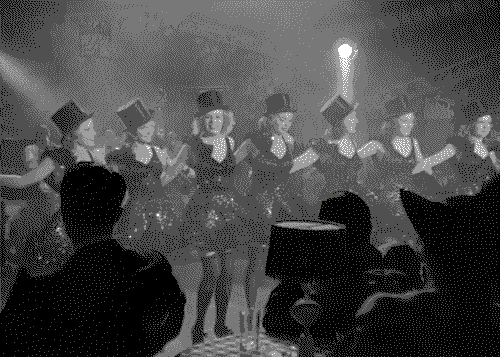The Male Gaze #

In a world ordered by sexual imbalance, pleasure in looking has been split between active/male and passive/female. The determining male gaze projects its fantasy onto the female figure, which is styled accordingly. In their traditional exhibitionist role women are simultaneously looked at and displayed, with their appearance coded for strong visual and erotic impact so that they can be said to connote to-be-looked-at-ness.
–Laura Mulvey, “Visual Pleasure and Narrative Cinema”
Men survey women before treating them. Consequently how a woman appears to a man can determine how she will be treated. To acquire some control over this process, women must contain it and interiorize it.
–John Berger, Ways of Seeing p. 46
So it’s the 1970s and a new feminist movement is popping off. But while previous generations of feminists had been concerned with political representation (the right to vote), the academic turn towards psychoanalytic theory meant that many 70s feminists were concerned with symbolic representation, while the burgeoning field of critical theory pushed feminists to think about ideological representation. Both theoretical frameworks focused on cultural products (like narrative films) and the ways they shape the world.
This week’s readings demonstrate the differences and similarities between psychoanalytic and critical theory, while also setting the stage for our work this semester. John Berger’s Ways of Seeing emerges from critical theory, which has a decidedly Marxist focus; in other words, critical theory is concerned with power structures, especially class as a tool of oppression. Laura Mulvey’s essay, on the other hand, takes the psychoanalytic approach.
Berger and Mulvey, following Jean-Paul Sartre, brought the concept of the “male gaze” into the mainstream, but from the earliest days of film, the gaze was being depicted and theorized by filmmakers, especially women.
We see this especially in Dance, Girl, Dance, which Claire Johnston noticed in the 1970s:
Towards the end of the film Arzner brings about her tour de force, cracking open the entire fabric of the film and exposing the workings of ideology in the construction of the stereotype of woman. Judy, in a fit of anger, turns on her audience and tells them how she sees them. This return of scrutiny in what within the film is assumed as a one-way process constitutes a direct assault on the audience within the film and the audience of the film, and has the effect of directly challenging the entire notion a woman as spectacle.
–Claire Johnston, “Women’s Cinema as Counter-Cinema”
But this climactic tour de force works because Arzner (along with story writer Vicki Baum) has developed the gaze (or gazes) as a foundational theme of her film; looks and looking are important throughout the movie.
After discussing this week’s readings and watching Dance, Girl, Dance in class, create a response to the following questions:
- What shots and/or scenes before Judy’s speech make us aware of “the male gaze”? Are there other types of gazes that Arzner includes? How are each of these represented visually?
- How do Bubbles and Judy respond to men looking at them throughout the film? How do they look back at the men and/or at each other?